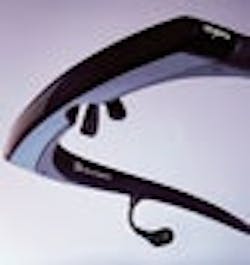By Jeffrey R. Harrow
So many devices from science fiction (better call it “speculative fiction”) are becoming reality that it generates a continuous sense of wonder—and a bit of fear—especially if we begin to envision the extent to which these advances will affect our customers’ changing expectations. We’re already forced to keep abreast of and incorporate many new technologies into our projects to just remain competitive. And it may take an even more aggressive understanding of technological trends to potentially lead the pack.
Consider holograms. In the first Star Wars movie, one of the robot R2D2’s most cherished capabilities was his full-movement projection of Princes Leia—a 3-D hologram that appeared to float in the air. (OK, he did have some quality problems with it, but hey—if you’d been knocked around by a bunch of weird little creatures in brown bathrobes called Jawas...)
In the real world, these “free-air” 3-D holographic displays are not new. I’ve seen several prototypes at university and similar labs, but they’re generally special-purpose devices that use expensive and cumbersome custom hardware. However, that may change.
Tiny Large Technology
Myvu for iPod personal viewer is one of a category of tools that take the output signal from media-player formats, such as MP4, DVD and cell phones, and project a magnified, floating image approximately 6 ft in front of the user.
According to the April 24, 2007, issue of Technology Review, a team at MIT believes that its nearly complete work will result in a 3-D display that, “will be small enough to add to an entertainment center, provide resolution as good as a standard analog television and cost only a couple hundred dollars.
The team’s new prototype, Mark III, will use the incredible power of today’s video-game and PC off-the-shelf graphics chips, rather than specialized hardware. Similarly, Mark III will dramatically shrink and improve the resolution of the previous Mark II. These contemporary chips will process the math that describes a 3-D scene using interactions between electrons, sound energy and lasers in real time. The resulting light will then “be projected onto a foggy piece of glass” and the real-time hologram will appear to float in space. Nice.
It’s especially ironic that we’ll be thanking the video-game market for this capability. It’s largely the demand of “time-wasting” video gamers that continues to force the rapid development of ever-more-powerful and ever-cheaper graphics chips—chips that may soon add Star Wars’ holograms to the long list of science fiction devices that become reality.
Beyond Games
One area that cries out for small, inexpensive 3-D displays is the visualization of an extremely complex process control system—the human body. Though MRI and other imaging technologies generate 3-D data, it’s impractical to routinely view the information in 3-D due to the processing power and cumbersome viewing equipment required. However, inexpensive 3-D displays and faster graphics chips could make such viewing routine. Another fascinating application might be viewing real-time, 3-D, “functional MRI” scans during a procedure.
Of course, if this works well for our bodies’ process control systems, it also holds vast potential for simplifying presentation of industrial process control system information.
A More Pedestrian View
Holograms have great potential, but they’re overkill for many applications, such as “tiny-large” personal displays. “Tiny-large” sounds like an oxymoron, but it describes a class of visual tools that look like sleek goggles. They magnify an image on small screens, such as those found on laptops or iPods, and create the illusion of watching the image on a big-screen TV.
One of the leaders in this market is Myvu Corp. Its Myvu viewer takes the output signal from media-player formats, such as MP4s, DVDs and cell phones, and projects a magnified floating image approximately 6 ft away—a comfortable watching distance—in front of the user. Users also can see “around” the image to keep them oriented in the real world while watching.
These personal displays have been around for more than a decade, but have tended to be expensive, of relatively low resolution and, well, less than stylish. Now, consumer versions are available for less than $300, and Myvu hopes to eventually bring the price down from there.
However, these displays are not just techno-bling. Myvu’s roots are in medical and military display, and it’s opening the door for significant changes in many industrial processes. For example, consider an aircraft mechanic working atop the wing of a jetliner, who needs a peek at a schematic, parts breakdown or installation instruction. She could, of course, climb down, refer to the shelves of “treeware” (i.e., books) kept near the plane, or call the information up as a virtual display right in front of her through her “glasses display.”
Please Fold, Spindle and Mutilate!
The technologies driving head-mounted displays or holograms also can be applied to solutions that don’t require them. For example, it might be desirable to display a constant representation of sensor data or an internal view of a chemical reactor on the outside of a vessel. An LCD screen could be mounted there, but wouldn’t you rather just press a flexible, conformal piece of plastic onto the curved side of the cylinder or pipe and display the desired images and/or data?
These applications aren’t commercially available—yet—but combinations of OLEDs, transparent flexible transistors, and transparent nanowiring certainly hold out these and other possibilities.
These are just a few of a growing number of areas where the convergence of previously disparate fields such as nanotechnology, biology, information science, and cognitive science will change all the rules—and our competitive landscapes as well. Dare I say it? Don’t blink!
Jeffrey R. Harrow is the principal technologist with The Harrow Group. He can be reached at [email protected].
About the Author
Jeffrey R. Harrow
Jeffrey R. Harrow

Leaders relevant to this article:

